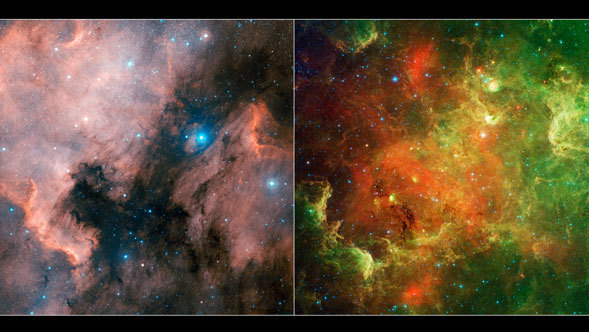
Pasadena, Calif. -- Stars at all stages of development, from dusty little tots to young adults, are on display in a new image from NASA's Spitzer Space Telescope.
This cosmic community is called the North America Nebula. In visible light, the region resembles the North America continent, with the most striking resemblance being the Gulf of Mexico. But in Spitzer's infrared view, the continent disappears. Instead, a swirling landscape of dust and young stars comes into view.
"One of the things that makes me so excited about this image is how different it is from the visible image, and how much more we can see in the infrared than in the visible," said Luisa Rebull of NASA's Spitzer Science Center at the California Institute of Technology, Pasadena, Calif. Rebull is lead author of a paper about the observations, accepted for publication in the Astrophysical Journal Supplement Series. "The Spitzer image reveals a wealth of detail about the dust and the young stars here."
Rebull and her team have identified more than 2,000 new, candidate young stars in the region. There were only about 200 known before. Because young stars grow up surrounded by blankets of dust, they are hidden in visible-light images. Spitzer's infrared detectors pick up the glow of the dusty, buried stars.
more
http://www.spitzer.caltech.edu/news/1249-ssc2011-03-New-View-of-Family-Life-in-the-North-America-Nebula